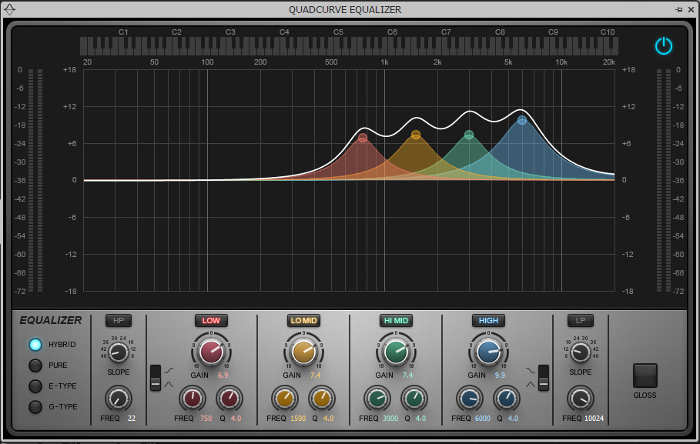Use unusual EQ curves to create new types of clean guitar sounds
I’ve always liked the sound of throwing pickups out of phase, except for the volume drop and not being able to vary the tone beyond that single, fixed sound. I also like how it can give a humbucker’s “darker” character more presence. So, I started researching ways to create the out-of-phase sound, but using EQ for greater flexibility.
With out-of-phase pickups, the sonic elements the pickups have in common cancel, while what they don’t have in common remains. This creates a very complex EQ curve that is difficult to match precisely with only a few stages of EQ. Several bands of parametric EQ and a couple bands of shelving will get you close, as described in the article Out-of-Phase Pickup Tone Emulation with EQ. But I wanted to come up with a more “universal” EQ structure.
Creating four fairly substantial midrange and upper midrange peaks doesn’t necessarily duplicate the out-of-phase pickup sound, but does a fine tribute to its “mojo”—the four peaks by definition also create dips, which is what happens when sound cancels. And because they’re midrange peaks, the lows become less prominent, which “tightens up” the sound.
The featured image above shows a good starting point. The peaks are at 750, 1500, 3000, and 6000 Hz with about 6 to 9 dB of gain and a Q factor of around 4.0. But you needn’t be picky: changing any frequency, gain, or Q setting produces a wide range of variations. You can also “weight” the gain toward the high or low frequencies. The response emphasizes the 6 kHz band to give a little extra brightness; generally, as you go lower in frequency you don’t want as much gain (then again maybe you do, for a beefier sound with some “honk” when driving distortion).

Another option is cutting a band instead of boosting. Fig. 1 resembles the main image above, but drops the level at 1500 Hz. This thins out the guitar somewhat so it can sit better in the background of a performance or mix, while the boost in the upper bands retains articulation.
Next time you want a more distinctive clean sound out of your guitar, give this technique a try. You just might agree it provides the coolness you’d normally want from an out-of-phase sound, but without some of the drawbacks.
